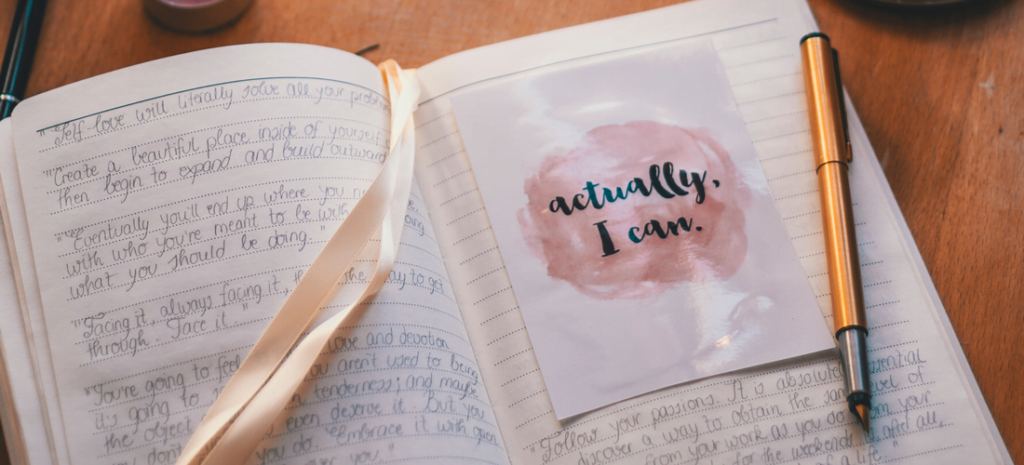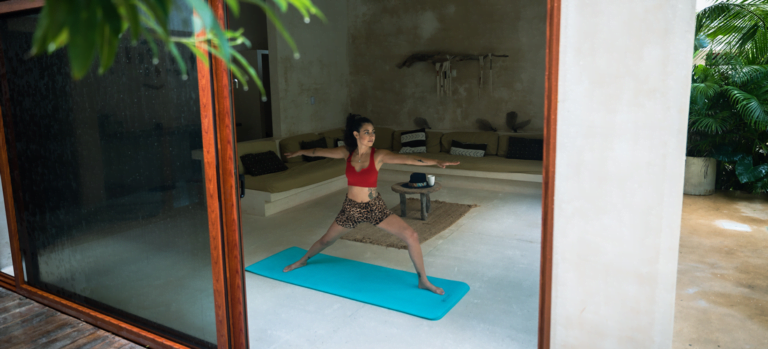Let’s face it, life can get pretty hectic. Between work, family, and everything in between, finding a moment of solitude and peace can feel like trying to find a needle in a haystack. But what if I told you, there are ways you can carve out that much-needed quiet time and tranquility, even amidst the chaos? Welcome to our blog post which delves into the world of mindfulness practices for solitude and peace. We’re going to explore how these practices not only help you find those elusive moments of calm, but also how it can dramatically improve your overall well-being. So, let’s embark on this journey to a more peaceful you.
Mindfulness, in its simplest form, is the practice of being fully present in the moment, allowing us to connect deeply with ourselves and our surroundings. It’s a powerful tool that fosters solitude and peace, serving as an anchor in the stormy seas of our daily lives. This practice invites us to slow down, to take a breath, and to engage fully with the here and now. In a world where distraction is the norm, mindfulness is a gentle reminder to cherish the present moment. Let’s dive into this transformative practice and discover its potential for promoting tranquility in our lives.
Benefits of Solitude
Spending time alone – solitude – has numerous benefits that are often overlooked in our hyper-connected society. When we consciously choose to step back from the hustle and bustle, we create an environment conducive to introspection and self-discovery. Solitude can foster creativity, as it offers a break from external influences, allowing our minds the freedom to explore ideas without interruption.
It also strengthens self-reliance, boosting our confidence in our own decision-making abilities. Importantly, solitude provides an opportunity for us to recharge mentally and emotionally, fostering a sense of inner peace that can help us navigate life’s challenges with greater ease. In essence, spending time alone can be a form of self-care, a vital component of maintaining overall well-being.
Solitude can be a powerful catalyst for achieving inner peace. Often, the hustle and bustle of daily life can clutter our minds with a barrage of external stimuli, leaving us feeling stressed, anxious, or overwhelmed.
By choosing to spend time alone, we give ourselves the chance to disconnect from these distractions and tune into our inner self. This focused alone time fosters self-reflection, a critical aspect of mindfulness. In these quiet moments, we can observe our thoughts, feelings, and emotions from a distance, allowing us to better understand ourselves and our reactions to the world around us.
This enhanced self-awareness often leads to a sense of balance, serenity, and ultimately, inner peace. Therefore, solitude is not just about being alone; it’s about cultivating a peaceful, mindful state of being.
Mindfulness and Its Role in Solitude
Mindfulness, at its core, is the practice of being fully present and engaged in the current moment. It involves acknowledging our thoughts, feelings, and sensations without judgment. Mindfulness helps us to stay grounded in the ‘here and now,’ rather than dwelling on the past or worrying about the future.
Practicing mindfulness can have a transformative impact on our experience of solitude. Firstly, mindfulness can help us appreciate the beauty of the present moment, which is often overlooked when we’re constantly bombarded with external stimuli. When we’re alone, being mindful can make us more aware of our surroundings, amplifying the sense of peace that solitude brings.
Secondly, mindfulness encourages self-discovery. In solitude, freed from external distractions, we can focus our attention inward. By practicing mindfulness during these times, we cultivate a deeper understanding of our inner selves. This introspection can lead to valuable insights, fostering personal growth and enhancing our overall well-being.
In essence, mindfulness can convert moments of solitude from periods of potential loneliness into enriching opportunities for self-exploration and inner peace.
Examples of Mindfulness Practices in Solitude
- Meditation: One of the most common mindfulness practices, meditation involves focusing on your breath, or a mantra, to create a sense of calm and presence. By consistently practicing meditation during solitude, we can train our minds to stay present and gradually cultivate a sense of tranquility and peace.
- Mindful Walks: Going for a walk alone can provide a perfect opportunity to practice mindfulness. Feel the ground beneath your feet, observe the rhythm of your breath, pay attention to the sounds around you. This simple act can help you connect deeply with the present moment, fostering a profound sense of peace and solitude.
- Mindful Journaling: Writing our thoughts and feelings down in a non-judgmental manner can be therapeutic. In solitude, practice mindful journaling, letting your thoughts flow freely onto the paper. This process not only encourages self-expression but also helps to gain clarity and increases self-understanding.
- Mindful Reading: Reading in solitude can be a deeply mindful practice if done consciously. Pay attention to each word, imagine the scenarios, connect with the characters and their emotions. This practice can create a rich, immersive, and mindful experience.
- Yoga: Practicing yoga alone can be a beautiful integration of mindfulness and physical activity. The focus on breath and movement alignment in yoga can cultivate a deep sense of awareness and presence, enhancing the peaceful embrace of solitude.
Mindful Breathing
Breath is often considered as the cornerstone of mindfulness practices. The act of focusing on our breath brings our attention to the present moment, helping to quieten the mind and establish a sense of inner peace and solitude. The simplicity of observing each inhalation and exhalation can serve as a powerful tool to reduce stress, enhance self-awareness, and promote emotional balance. Furthermore, mindful breathing can be practiced anywhere and anytime, making it a versatile mindfulness tool that anyone can incorporate into their daily routine.
Simple Breathing Exercises for Relaxation
Follow this step-by-step guide to practice a simple breathing exercise which can help to enhance relaxation and foster a sense of peace and solitude:
- Find a Comfortable Position: Begin by finding a quiet place where you can sit or lay down comfortably. Ensure your body is relaxed and free from any unnecessary tension.
- Close your Eyes: Gently close your eyes to minimize external distractions and enhance your focus on the exercise.
- Pay Attention to your Natural Breath: For the first few moments, simply observe your natural breath. Notice the rhythm, depth, and pace of your inhalation and exhalation.
- Inhale Deeply: Now, slowly inhale through your nose for a count of four. Feel your chest and belly rise as you fill your lungs with air.
- Hold your Breath: Hold your breath for a brief pause of about two seconds.
- Exhale Slowly: Gradually exhale through your mouth for a count of six, letting out all the air. Feel your chest and belly fall.
- Pause: Again pause your breath for about two seconds before the next inhale.
- Repeat: Continue this pattern for several minutes. With each cycle, try to focus on the sensation of the air entering and leaving your body.
The goal of this exercise is not to control your breath, but to observe and understand its pattern. If at any point you feel uncomfortable, return to your normal breathing rhythm. This practice of mindful breathing can help foster a sense of relaxation and solitude, promoting overall wellbeing.
Mindful breathing is an integral practice for nurturing inner peace, particularly in moments of solitude. It’s a form of meditation where attention is fully dedicated to the rhythm and sensation of our breath.
As we focus on the inhalation and exhalation process, we allow our minds to declutter, freeing ourselves from the barrage of thoughts and worries that often crowd our consciousness. This dedicated focus on a simple, vital act brings us into the present moment, away from concerns about the past or the future.
In solitude, mindful breathing serves as an anchor, providing us with a state of calm and tranquility. It helps us appreciate our alone time as an opportunity for self-discovery and introspection, contributing to a profound sense of inner peace.
Grounding Techniques
Grounding is another critical component of mindfulness practices. It involves techniques that help individuals anchor their awareness in the present moment, using sensory experiences as a base. This method enables us to distance ourselves from overwhelming feelings or thoughts, bringing our focus to what we can see, touch, smell, taste and hear instead.
The primary goal of grounding is to reduce the severity of distressing emotions, allowing for a state of calm and stability. In the context of mindfulness, grounding is significant as it provides a practical tool for managing moments of anxiety or stress, offering a pathway back to the peace and solitude of the present moment.
Practical Grounding Exercises for Moments of Solitude
- Five Senses Exercise: This is a common grounding technique where you identify five things you can see, four things you can touch, three things you can hear, two things you can smell, and one thing you can taste. This exercise helps bring you back to the present by grounding you through your senses.
- Progressive Muscle Relaxation: Begin by taking a few deep breaths. Then, starting from your toes and moving up towards your head, contract and relax each muscle group in your body. This practice allows you to focus on physical sensations and diverts your attention away from distressing thoughts.
- Mindful Walking: Find a peaceful place where you can walk undisturbed. As you take each step, pay attention to the sensation of your foot touching the ground and the feeling of your body moving. This exercise combines physical activity with mindfulness, grounding you in the current moment.
- Breath Focus: Sit in a comfortable position and close your eyes. Concentrate on your breathing, noticing the rise and fall of your chest and the sensation of the air entering and leaving your body. This practice helps to quiet the mind and bring focus to the present.
- Nature Connection: If you have access to a natural area, spend some time observing the details of your surroundings. Notice the colors, smells, sounds, and textures around you. This form of grounding connects you with the natural world, promoting a sense of peace and solitude.
Grounding techniques, such as the mindfulness practices outlined above, foster a deep sense of peace and connection to the present moment by actively engaging the mind and body with the tangible world.
These practices serve as anchors, rooting us in the ‘here and now,’ and deterring our minds from drifting into worries about the past or future. Whether it’s paying attention to our breath, feeling the texture of an object, or noticing the intricate details of nature, these exercises shift our focus from internal distress to external awareness.
As our attention is drawn to the sensory experiences of the present moment, our minds naturally quieten, casting away distractions and instilling a profound sense of tranquility. Therein lies the beauty of grounding – it is a gentle reminder that peace is always accessible to us, right here, right now.
Mindful Observation
Practicing mindfulness in solitude can significantly enhance our awareness of the environment, contributing to a deep sense of tranquility. We can achieve this by engaging our senses in a mindful manner, inviting a heightened state of consciousness that cherishes the ‘here and now.’
Take a moment to fully immerse yourself in your surroundings. Listen to the distant hum of traffic or the rustling leaves, smell the fresh grass or a brewing cup of coffee, feel the texture of the book in your hands or the warmth of the sun on your skin. Each sensory experience can offer a moment of connection and grounding, pulling us away from the whirlwind of thoughts and into the calm of the present moment.
Observing the world around us isn’t just about acknowledging our environment, it’s about finding beauty and tranquility in simple observations. A flower blooming, a bird soaring across the sky, or even the rhythmic fall of raindrops can instill a sense of peace and contentment. These simple, often overlooked aspects of our environment, carry the potential to transform moments of solitude into rich experiences of mindful connection and inner peace.
Digital Detox and Mindful Solitude
In the era of constant connectivity, achieving mindful solitude poses its own set of challenges. Our digital devices, which often serve as gateways to social interactions, information, and entertainment, can inadvertently hinder our journey towards mindful solitude. As we find ourselves continually responding to messages, scrolling through news feeds, or simply playing a game, the noise of the digital world can seep into our moments of solitude, diluting its quality.
However, it’s important to remember that technology, like any tool, is as beneficial or detrimental as its user allows it to be. Applied appropriately, technology can aid in mindfulness practices. For instance, there are numerous apps available that guide users through meditation, provide calming background sounds, or offer structured courses on mindfulness.
The key is to strike a balance. A digital detox – periods of time when one consciously refrains from using digital devices – can be a healthy practice. It allows us to disconnect from the digital noise and reconnect with ourselves, fostering an environment conducive to solitude and peace. Thus, mindful solitude in the digital age is about using technology judiciously, leveraging its benefits, and recognizing when it’s time to disconnect and retreat into our private oasis of mindfulness.
Tips for Disconnecting and Creating Mindful Moments Without Screens
- Set Boundaries: Define specific time windows when you will disconnect from all digital devices. This could be an hour in the morning, an hour before bed, or even a full day during the weekend. Use this time for self-reflection, reading, or simply enjoying the quiet.
- Engage in Physical Activity: Physical activities like walking, hiking, or yoga can be powerful tools for mindfulness. They allow us to connect with our bodies and the world around us in a way that screens often prevent.
- Meditate: Meditation helps anchor us in the present moment and cultivate awareness. Even a few minutes of meditation can help detox from digital noise.
- Nature Therapy: Spending time in nature can be an effective way to disconnect from digital screens. The natural world offers plenty of opportunities for mindfulness, from listening to the rustling leaves to observing the movement of clouds.
- Creative Activities: Engaging in creative activities such as painting, writing, or cooking, can be therapeutic and provide an avenue for self-expression without the need for digital tools.
- Mindful Eating: Instead of eating in front of a screen, try to focus on the food you’re eating. Pay attention to the taste, texture, and smell of your meal. This not only enhances the enjoyment of eating but also fosters mindfulness.
The Role of Digital Detox in Cultivating Inner Peace
A digital detox is a powerful tool in the quest for inner peace. By consciously disconnecting from our screens, we create space to reconnect with ourselves and the world around us. Constant digital connection can lead to information overload, stress, and a feeling of being ‘always-on’.
On the other hand, a digital detox allows us to slow down, reflect, and be more attentive to our thoughts and feelings. This practice encourages the cultivation of mindfulness, which fundamentally helps in fostering a deep sense of inner peace. It’s about reclaiming our time and attention, allowing us to focus on the experiences and relationships that truly enrich our lives.
In essence, a digital detox is not just about disconnecting from our devices; it’s about reconnecting with our inner selves and finding tranquility in the solitude.
Mindful Reflection and Journaling
Reflection plays a crucial role in mindfulness, providing us the opportunity to observe our thoughts and emotions without judgment. It is a key ingredient in cultivating self-awareness and understanding, allowing us to recognize patterns and triggers that might otherwise elude our conscious awareness. As we reflect, we learn to not only identify but also accept our feelings and experiences, fostering a healthier and more compassionate relationship with ourselves.
In solitude, journaling can be enormously beneficial in enhancing our mindfulness practice. It serves as a private space where our thoughts, feelings, and experiences can be freely expressed, providing a tangible reflection of our inner world. The act of writing itself can be therapeutic, helping us to declutter our minds and gain clarity. Over time, our journal entries offer a window into our personal growth and transformation, illuminating our journey towards greater mindfulness and inner peace. In essence, journaling in solitude allows us to connect deeper with ourselves, fostering a sense of peace and fulfillment.
Bringing Mindfulness into Daily Life
Integrating mindfulness into our everyday activities is a practical and effective way to cultivate inner peace and solitude. By practicing mindfulness, we can transform mundane activities into opportunities for increased self-awareness and tranquility.
For instance, activities like cooking, cleaning, or even commuting can become grounding experiences when we fully immerse ourselves in the moment, paying attention to the sensations, smells, and sounds around us.
Similarly, we can introduce mindfulness in our work routines by taking regular breaks to breath and refocus, fostering a more balanced and less stressful work environment. Essentially, integrating mindfulness into daily life is about embracing the present moment in all its simplicity and authenticity, transforming ordinary experiences into extraordinary moments of self-discovery and inner peace.
Cultivating a Mindful Mindset Beyond Solitude
Cultivating a mindful mindset extends beyond moments of solitude; it’s about incorporating mindfulness into every aspect of our lives. Interpersonal relationships offer a valuable platform for mindfulness practice. By bringing a fuller presence and active listening to our interactions with others, we can foster deeper connections and more meaningful conversations.
Furthermore, physical activities, such as walking or yoga, when done mindfully, can be a wellspring of tranquility and self-awareness. Paying attention to each step in a walk or each movement in a yoga pose can bring us back to the present moment, anchoring us in the here and now.
Another practical strategy is to practice mindful eating. This involves paying close attention to the taste, texture, and smell of our food, appreciating each bite, and recognizing the nourishment it provides. This practice helps us cultivate gratitude and can turn a simple meal into a moment of joy and peace.
Above all, it’s crucial to remember that mindfulness is a journey, not a destination. Regardless of the situation or activity, the key lies in maintaining an open, non-judgmental awareness of our present moment experiences, thereby cultivating a mindful mindset beyond moments of solitude.
Creating a Mindful Routine for Sustained Peace
Creating a mindful routine is essential in maintaining a sustained sense of peace and tranquility. Here are some strategies to incorporate mindfulness into your daily routine:
- Start Your Day with Mindfulness: Begin your day with a moment of mindfulness immediately upon waking. This can be as simple as taking a few deep, mindful breaths before getting out of bed, setting a positive tone for the day ahead.
- Mindful Exercise: Incorporate a form of mindful physical activity into your daily routine. This could be yoga, tai chi, or simply a mindful walk in nature. Paying attention to the sensations in your body during the exercise can ground you in the present moment.
- Mindful Meal Times: Make a habit of practicing mindful eating at least once a day. Savor the flavors, textures, and scents of your food, and express gratitude for the nourishment it provides.
- Mindful Breaks: Incorporate short mindfulness breaks into your schedule. These can be moments of stillness where you focus on your breath, observe your thoughts and feelings, or simply attune to the sounds and sensations around you.
- End Your Day with Mindfulness: Wrap up your day with a mindfulness practice like meditation or a body scan. This can help you to relax, sleep better, and prepare for the next day.
Final Thoughts on Mindfulness Practices for Solitude and Peace
Mindfulness as a practice for solitude and peace encompasses a variety of strategies. These include starting and ending your day with a moment of mindfulness, incorporating mindful exercise such as yoga or tai chi into your routine, and eating mindfully to appreciate the nourishment your food provides.
Regular mindful breaks throughout your day can also serve to ground you in the present moment, offering brief respite from the demands of daily life. By incorporating these practices into your routine, you can cultivate a sustained sense of peace and tranquility, making the most of moments of solitude for your mental well-being.













